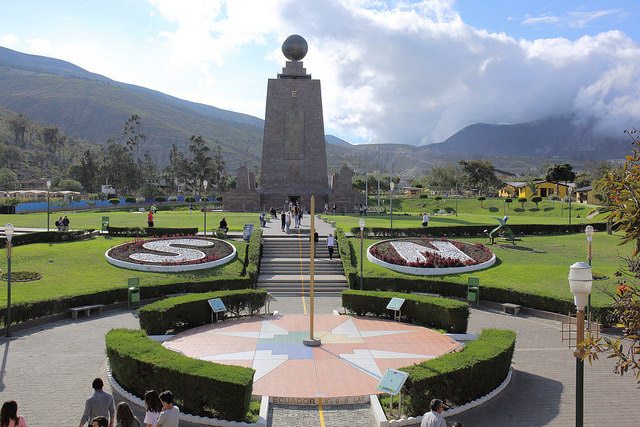- Talk with an expert insider!
- USA & Canada: 1-773-280-9571
- Ecuador: +593-987-004-404
- [email protected]

Quito Altitude Sickness and Treatment

Solo Female Travel in Ecuador & Galapagos – Insider Advice
October 20, 2021
Galapagos Islands Traditions: Crossing the Equator
October 26, 2022Quito and many other towns in the highlands region of Ecuador sit at a high altitude. The air is thinner, and this is harder work for your body. This can present a few minor issues but adapting to a change of altitude is manageable for most people, if a little care is taken. Knowing what to expect and how to deal with the effects of altitude can be helpful when planning a trip to Quito. Here we will explain the effects of altitude, what altitude sickness is and the treatment for it. We will also cover how to avoid getting altitude sickness if you are traveling into Quito, and how to minimize the symptoms.
Quito Altitude
Quito is a city situated high up in the Andean mountains at an altitude of approximately 3,000 meters. It is surrounded by some mountains that are of an even higher altitude, some of which you may visit on your Ecuador vacation. If you fly or bus into Quito from sea level, you will experience a rather extreme change in altitude, which can lead to some mild symptoms of altitude sickness in some.

Symptoms of Altitude Sickness
Altitude sickness has a number of symptoms which you may experience if arriving at Quito from a significantly lower altitude – which many people arriving at Quito airport will be. The symptoms of altitude sickness typically include headaches and insomnia, as well as nausea or an upset stomach. Feeling lightheaded or dizzy is another symptom, as is feeling a bit short of breath climbing the stairs. A loss of appetite is common too. These effects are usually mild and are likely to last for a day or two.
Though it is uncommon, sometimes more severe symptoms may occur. These include very bad headaches and respiratory issues, such as feeling very short of breath even when you are not exerting yourself (e.g. at rest). Should your symptoms be very severe then you should see a doctor as soon as possible. In the instance that this occurs in a remote area, the best thing to do is descend to a lower altitude immediately.
Avoiding Altitude Sickness in Quito / Altitude Sickness Treatment
Do not worry too much about altitude sickness, as for most people the symptoms are very mild, and will not spoil your enjoyment of your trip. In the vast majority of cases, with mild symptoms of altitude sickness, the best way to adapt quickly is to stay hydrated by drinking lots of water. Alcohol will make you feel worse, so this is best avoided for a day or two. Eat light meals, as heavy meals can make the nausea worse for some.
In some cases, you might want to take pain relievers for headaches. Aspirin can be good for this to help alleviate the symptoms. Try not to do too much as you settle in at the new the altitude. Sometimes people head out hiking in the mountains right away when they arrive and they are likely to experience more severe symptoms, such as vomiting. Equally, rushing out for a vigorous walk is not likely to make you feel very good, so this is best avoided. Give yourself a rest and adjust slowly to the change and the effects it is having on your body.
Some people may want to consider getting medication to minimize the impacts of altitude sickness. Do not do this without consulting with your doctor first! Diamox is a medication that you might try, and this helps to reduce the impact of symptoms on your body. However, if you take the steps recommended above, taking this medicine is not necessary for most people.
As mentioned above, if you experience more extreme effects of altitude sickness then you should see a doctor immediately and/or drop down to a lower altitude straight away.

To reduce the impact of the altitude when you arrive in Quito, remember to drink lots of water (try to drink more than usual – around three liters per day) and avoid alcohol initially. Also, beware! Another important thing to remember about altitude is that you will be closer to the sun. Sometimes it may be cloudy or overcast in Quito, but you can still get burned as the Equatorial sun is also very strong. Make sure to use sunscreen and wear a hat to avoid this.
We are experts in travel in Ecuador and the Galapagos Islands, and we can help with organizing activities for your first day in Quito that are not too vigorous, so that you can adapt to the altitude change with ease. You might want to consider our Quito city tour as one option. Please do not hesitate to get in touch to find out how we can help you.





